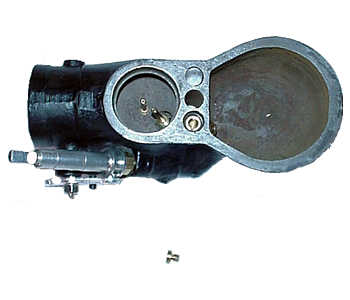Compensator Jet

- The Compensator Jet compensates for the enriching effect of the Main Jet as airflow increases and it thus provides a more constant air to fuel mixture.
- The compensator Jet is the only component in the main well of the lower casting.
- The jet should be installed with 2 gasket washers, since on some casting and secondary well combinations the jet will come into contact with the brass secondary causing restricted flow.
- Original jets were marked with a number to signify orifice size. From October 1927 through June of 1928 they were numbered "18", which was 0.03543" diameter. From July 1928 through 1931 they were numbered "19", which was 0.0374" diameter.
- I recommend that orifice is drilled with a #63 to #64 drill, which is 37 - 36 thousands of an inch.
- To resize jet orifice: Heat jet at orifice end and fill with solder (Do not over heat or fill beyond 1/8" deep with solder). Carefully remove solder from indented area with a 5/64" drill, using a pen vise (not a drill motor). Carefully drill out orifice (With pen vise! Do not use drill motor) and clean out with air pressure. When soldering and drilling orifice of this jet, be cautious of leaving solder in the screwdriver slot area. A screwdriver can move the solder, when jet is installed, reduce the orifice opening.
- The flow should be between 155 and 165 Milliliters per minute.
- I particularly recommend flow testing of jets that have been soldered and drilled.
- If jet is too large, the excessive flow will cause irregular running at low speeds. The excessive flow also causes low mileage, sooty plugs, and smell of gas.
- If the jet is too small or restricted, the insufficient flow will cause a lean mixture and miss or jerk on hard pulls at low speed.
- The threads are M5 x .75 (Metric).
ˆ Top of Page • Gaskets • Secondary Well • Small Drill Sets • Jet Flow Testing Setup